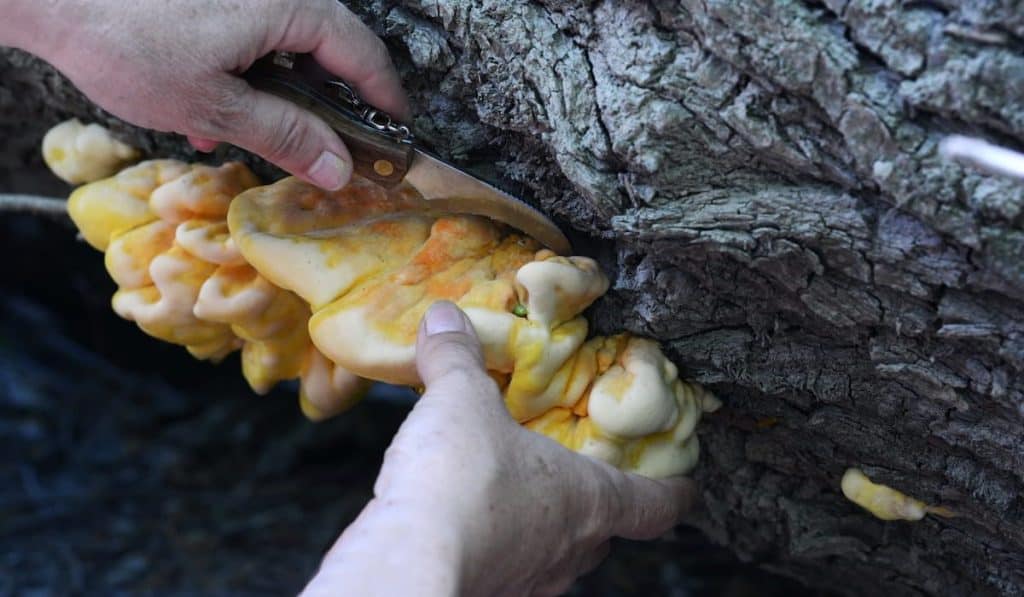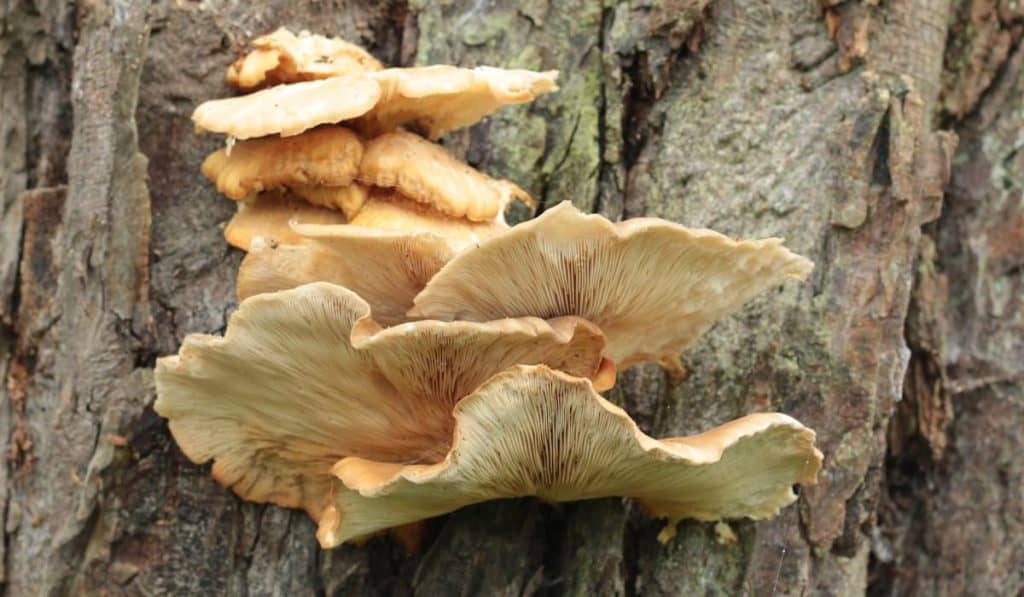It’s fairly simple to become a professional forager. All that you need are quality foraged goods and a restaurant or store as a buyer. You can also sell certain goods online, dried. Or, you can turn them into jams, jellies, balms, and lotions to sell.
Of course, some foraged goods are worth more than others. You’ll want to make the best of your time and effort by knowing what to look for!
Can You Forage Professionally?
So, can you sell what you forage? Not everything, but there are several items that are much more highly sought-after. You can make a bit of spare money with these.
All that you need to do is gather the highest quality, and contact a restaurant or store to find an interested buyer. You can also see about procuring a booth if there is a local farmer’s market.
Finally, you can turn your foraged foods into homemade foods to sell online, in your own shop (Etsy is a great platform). This includes jams, teas, and more!
What Do You Need to Know to Get Started?
Foraging can be lots of fun, as well as delicious and nutritious. It can even be somewhat lucrative if you’d like to become a professional (as a side job).
This is a hobby that can also be dangerous, however. Many plants are quite toxic, and there are even some poisonous plants that resemble edible look-alikes. So, you’ll need to properly educate yourself.
You’ll also need to know what you can forage where you live specifically, as flora varies depending on clime (Southern vs Northern climes, for example).
Before you read any more you might like to take a look at our complete guide to foraging here.
Lucrative Edible Plants to Look For
In the great outdoors, there are edible flowers, mushrooms, berries, tree-fruits, greens, tree leaves… you name it. They are all incomparably fresh when picked at the right time of year.
Here are some of the most common (and popular, for selling purposes) edible plants that you can look for:
- Dandelions flowers and leaves. Dandelions are one of the most recognizable edible plants out there. With their cheerful, fluffy flowers, and their jagged leaves, they’re hard to mistake. They are plentiful in the spring and summer. Dandelion flowers taste like greens and honey and are slightly bitter. The leaves are quite crispy and tart. They go great in salads, and at stores and restaurants, they are becoming more and more popular.
- Rosehips. Rosehips are one of the most popular foraged goods because they are so tasty and so healthy. Not only do they taste like little rose-cherries, but they’re super-rich in vitamin C. Rose hips appear in the autumn, to replace the flowers as they are spent. You can make them into teas or dry them to sell online.
- Chicken of the Woods mushrooms. If you’re lucky to live somewhere with Chicken of the Woods mushrooms, you will notice them growing on tree bark. They are thick, fan-shaped, and wrinkled, growing in a tan and orange cluster. These mushrooms are beloved for their meaty texture and slightly lemony flavor. They can be sold for roughly $20 per pound.

- Puffball mushrooms. These mushrooms are nice and easy on the forager. Many mushrooms resemble Puffballs as they grow, but True Puffballs will be distinguishable by their lack of gills. This is quite rare in mushrooms, and the inside of a Puffball will look like a porous, sponge-like material. These mushrooms are great in stir-fries and soups and are said to be somewhat like tofu in texture and flavor. People will often cube and sautee them, and breaded Puffball Mushroom is also quite popular. They can go for around $8-$10 per pound.
- Morel mushrooms. Morel mushrooms are considered by many to be a sort of delicacy. They are renowned for their unique nutty flavor, and are excellent sauteed plain, in stir-fries, in soups, and more! These mushrooms also have a very short growing season, making them very in-demand. They typically sell for at least $30 a pound. For the professional forager, these can be a real money-maker!
- Blackberries. There are no poisonous blackberry look-alikes. The closest in appearance would be a Marionberry, which grows on trees rather than bushes, and is also safely edible. So, if you see blackberries, feel free to gather up some of the plump, juicy fruit. Sell the berries fresh or frozen at your local farmer’s market, or turn the berries into jams, syrups, and other sellable goods yourself.
- Raspberries. As with blackberries, Raspberries have no poisonous look-alikes. The closest in appearance is the benign and delicious cloudberry, which is more round and orange in color. Raspberries are easily recognizable as they grow in plump, bumpy, red little orbs, and they have hollow middles. They are super-sweet and also rather tart. Jams and jellies made from this delectable fruit are extremely popular.
- Lilacs. While they are not the most substantial, beautiful, fragrant lilacs can be made into well-loved syrups, candies, and more. They might be the item that makes your shop special.
- Redbuds. Redbuds appear in the spring, just once a year. They grow in colorful, sweet-smelling clusters on the Redbud Tree. They can be made into jams, syrups, teas, and even added to cold drinks, like lemonade.
- Oyster Mushrooms. Oysters mushrooms are wildly popular. They are recognizable by the way they grow in shelf-like clusters. True oyster gills run down the stem, not to be mistaken with the edible but less tasty Elm Oyster (whose gills do not). A poisonous lookalike is the Ghost Mushroom, but you should be able to differentiate pretty quickly as it glows in the dark! You may find these in high demand at the farmer’s market or even at a local restaurant. Oyster Mushrooms are used in stir-fries and soups and valued for their uniquely meaty texture and mildly fishy flavor. They can sell for $6-$12 per pound.

- Sheep Sorrel. Sheep Sorrel is a leafy, flowering plant that any aspiring professional forager will want to be familiar with. The greens are edible and used in many medicines, for their anti-inflammatory and anti-oxidant properties. Sheep Sorrel is even a key ingredient in pharmaceuticals used to help fight off cancer. If you can find it, you may be able to sell Sheep Sorrel at a local grocery store or farmer’s market. People tend to enjoy it in salads fresh, as it has a tart, rhubarb-like flavor. Or, it can be dried and sold online (and possibly in-store as well).
- Elderberry Flowers. Elderberry flowers are super-fragrant, pollen-rich flowers that make excellent flavoring for both food and drink. You’re unlikely to mistake the flower, thanks to its distinctive, summery, honey-like smell. Never pick flowers that smell in any way unpleasant or foul. The blossoms may be sought-after not only by your local grocery store but also breweries and wineries. They can be sold dried, fresh, or frozen for upwards of $20 per pound. Just beware: the flowers may be somewhat of a delicacy, but the stems and leaves are poisonous.
- Burdock roots. Burdock roots are known for their thistle-like flowers and round, soft leaves; and of course, their enormous roots. Burdock Roots are one of the most lucrative crops worldwide. For a professional forager, it’s well worth the effort to forage, because you can almost always find buyers for fresh, quality Burdock Root.
- Beebalm leaves. If you’re lucky enough to find Bee Balm, which grows big pink flowers that look similar to giant clover, you can dry the leaves to sell as seasoning or tea. Beebalm tea is known to help with anxiety and depression and has a mint and sage-like flavor.
Toxic Lookalikes and Other Common Plants to Avoid
For the uncanny forager, toxic plants are a real risk! They will make you extremely ill, and some can even prove fatal. Before you begin, you’ll need to arm yourself with the knowledge of toxic plants to avoid and to remember to never eat anything you’re not 100% sure of. Some common toxic plants to avoid are:
- Death Cap Mushrooms. Known for their white body and gills, Death Cap mushrooms are known to cause liver failure. The edible lookalike of the Death Cap Mushroom is the Paddy Straw Mushroom. Asian Paddy Mushrooms have pink rather than white gills, however.
- False Morrell Mushrooms (a Morel Mushroom look alike). Known for their brain-like appearance, False Morel Mushrooms look deceptively similar to Morel, except that when ingested, they can cause death. How can you tell the difference? True Morrel Mushrooms are hollow on the inside, whereas False Morel Mushrooms tend to contain fluff. True Morrels also join their caps to the stem at the bottom, whereas False Morel Mushrooms, the stem joins at the top of the cap, and sort of folds over it.
- Moonseed (a grape look alike). Moonseed berries look a lot like grapes, but they are very poisonous. It can be hard to tell them apart. Grapes grow with vining tendrils and have a few seeds. Moonseeds have just one crescent seed.
- False Garlic (a Wild Garlic look alike). Wild garlic can grow just about anywhere and is quite plentiful. Just make sure that you haven’t got False Garlic instead.
- Jack O Lantern Mushrooms (a chicken of the woods look alike). Jack O Lantern Mushrooms are Chicken of the Woods look-alikes. They grow in the same areas and at the same time of year. Fortunately, you can tell the difference with just one trick: check under the cap. Poisonous Jack O Lantern Mushrooms will have gills, whereas Chicken of the Woods Mushrooms have pores.
- Wild Hemlock (a Wild Carrot look alike). If you stumble onto Wild Hemlock, you may think you’d found a Wild Carrot. Always be sure to double-check!
- Cherry Tree cambium. Cherry Tree cambium is one of the primary toxic varieties to avoid.
- Ghost Mushrooms. This is only found in Asia and Australia but looks remarkably similar to Chicken of the Woods. The most noteworthy difference is that Ghost Mushrooms glow!
- Manchineel Tree fruit, leaves, cambium, and bark. Though they may look like crabapples, Manchineel fruit is quite different and quite toxic. In fact, the entire Manchineel Tree is full of a super-irritating, sticky white sap (hardly appetizing anyway).
What Can You Make From Foraged Goods to Sell?
Foraging opens a whole world are goods to be gathered. Mushrooms can be dried or sold fresh at local restaurants or stores, or at a farmer’s market. Fruit can be sold at the store, fresh or frozen, or made into jams, jellies, and syrups to sell.
Greens are great for selling fresh, you can dry them and make them into your own marketable seasonings, healthy herbs, or teas. There are even more ways that you can enjoy foraged foods fresh yourself.
As you can see, it is possible, and pretty simple, to become a professional forager. Just don’t expect it to cover all of the expenses that you have. It’s better as a side-gig, and you’ll get better at it as you first, secure buyers, and second, become more familiar with lucrative edible foods and where they grow.




